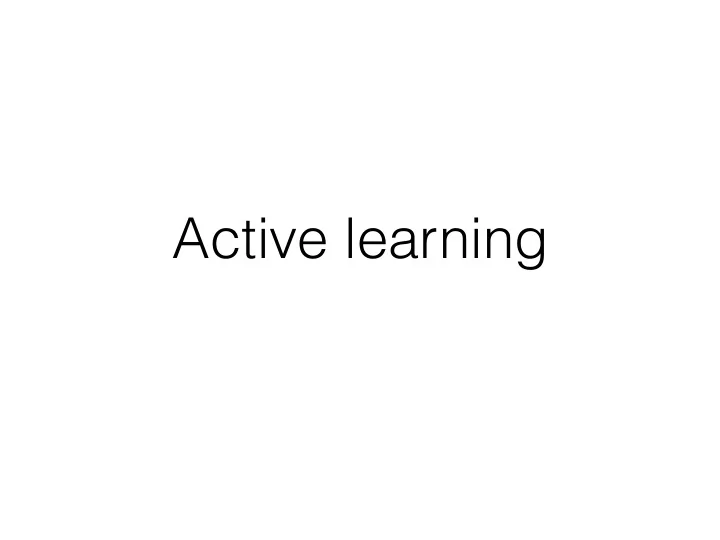

Active learning
Co-training
3
Subtract-average detection score Grey-scale detection score
Summary • Boosting is a method for learning an accurate classifiers by combining many weak classifiers. • Boosting is resistant to over-fitting . • Margins quantify prediction confidence. • High noise is a serious problem for learning classifiers- can’t be solved by minimizing convex functions. • Robustboost can solve some high noise problems. Exact characterization still unclear. • Jboost - an implementation of ADTrees and various boosting algorithms in java. • Book on boosting coming this spring. • Thank you, questions? 5
Pedestrian detection - typical segment 5/17/06 UCLA
Current best results 5/17/06 UCLA
Image Features “Rectangle filters” Similar to Haar wavelets Papageorgiou, et al. ⎧ h t ( x i ) = 1 if f t ( x i ) > θ t ⎨ ⎩ 0 otherwise Very fast to compute using “integral image”. Unique Binary Features Combined using adaboost 5/17/06 UCLA
Yotam’s features max (p1,p2) < min(q1,q2,q3,q4) Faster to calculate than Viola and Jones Search for a good feature based on genetic programming 5/17/06 UCLA
Definition •Feature works in one of 3 resolutions: full, half, quarter •Two sets of up to 6 points each •Each point is an individual pixel •Feature says yes if all white points have higher values then all black points, or vice versa 5/17/06 UCLA
Advantages • Deal better with the variation in illumination, no need to normalize. • Highly efficient (3-4 image access operations). 2 times faster than Viola&Jones • 20% of the memory 5/17/06 UCLA
Steps of batch learning • Collect labeled examples • Run learning algorithm to generate classification rule • Test classification rule on new data. 5/17/06 UCLA
Labeling process 1500 pedestrians Collected 6 Hrs of video -> 540,000 frames 170,000 boxes per frame 20 seconds for marking a box around a pedestrian. 3 seconds for deciding if box is pedestrian or not. How to choose “hard” negative examples? 5/17/06 UCLA
Steps of active learning • Collect labeled examples • Run learning algorithm to generate classification rule • Apply classifier on new data. and label informative examples. 5/17/06 UCLA
SEVILLE screen shot 1 5/17/06 UCLA
SEVILLE screen shot 2 5/17/06 UCLA
Margins Consider the following: An example: <x,y> e.g. < ,+1> ∑ Normalized score: ( ) T α t h t x − 1 ≤ ≤ 1 t = 1 ∑ T α t t = 1 ∑ ( ) T α t h t x The margin is: t = 1 y ∑ T α t t = 1 margin > 0 means correct classification 5/17/06 UCLA
Display the rectangles inside the margins 5/17/06 UCLA
large margins => reliable predictions 1000 2000 3000 10 20 50 100 500 Validation Learning 0 0.5 1 0 0.5 1 5/17/06 UCLA
Margin Distributions 5/17/06 UCLA
Summary of Training effort 5/17/06 UCLA
Summary of Training Only examples whose score is in this range are hand - labeled 5/17/06 UCLA
Few training examples 5/17/06 UCLA
After re-labeling feedback 5/17/06 UCLA
Final detector 5/17/06 UCLA
Examples - easy Positive Negative 5/17/06 UCLA
Examples - medium Positive Negative 5/17/06 UCLA
Examples - hard Iteration Positive Negative 7 8 9 10 5/17/06 UCLA
And the figure in the gown is.. 5/17/06 UCLA
Seville cycles 5/17/06 UCLA
Summary • Boosting and SVM control over-fitting using margins. • Margins measure the stability of the prediction, not conditional probability. • Margins are useful for co-training and for active-learning. 31 5/17/06 UCLA
Recommend
More recommend